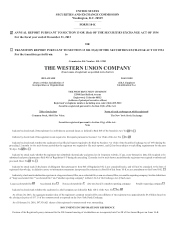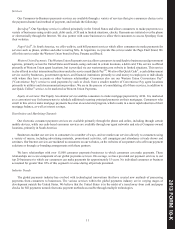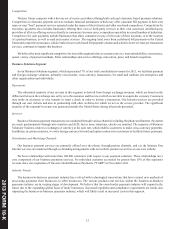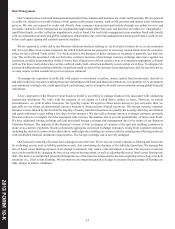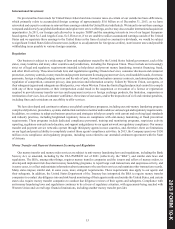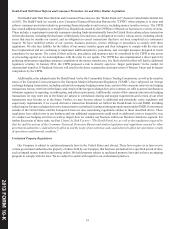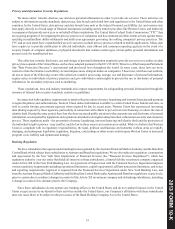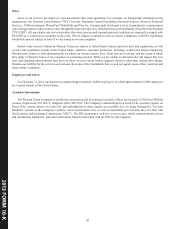Western Union 2013 Annual Report Download - page 120
Download and view the complete annual report
Please find page 120 of the 2013 Western Union annual report below. You can navigate through the pages in the report by either clicking on the pages listed below, or by using the keyword search tool below to find specific information within the annual report.
2013 FORM 10-K
10
Competition
We face robust competition in the highly-fragmented Consumer-to-Consumer money transfer industry. We compete with a
variety of remittance providers, including:
• Global money transfer providers - Global money transfer providers allow consumers to send money to a wide variety of
locations, in both their home countries and abroad.
• Regional money transfer providers - Regional money transfer providers, or "niche" providers, provide the same services as
global money transfer providers, but focus on a smaller group of geographic corridors or services within one region, such as
North America to the Caribbean, Central or South America, or Western Europe to North Africa.
• Electronic channels - Online money transfer service providers, including certain electronic payment providers, allow
consumers to send and receive money electronically using the Internet or through mobile devices. Electronic channels also
include digital wallets and digital currencies.
• Banks and postbanks - Banks and postbanks of all sizes compete with us in a number of ways, including bank wire services
and card-based services.
• Informal networks - Informal networks enable people to transfer funds without formal mechanisms and often without
compliance with government reporting requirements. We believe that such networks comprise a significant share of the market.
• Alternative channels - Alternative channels for sending and receiving money include mail and commercial courier services,
and card-based options, such as ATM cards and stored-value cards.
We believe the most significant competitive factors in Consumer-to-Consumer remittances relate to the overall consumer
value proposition, including brand recognition, trust and reliability, consumer experience and price, and distribution network and
channel options.
Consumer-to-Business Segment
In our Consumer-to-Business segment, which represented 11% of our total consolidated revenues for 2013, we provide fast
and convenient options to make one-time or recurring payments from consumers to businesses and other organizations, including
utilities, auto finance companies, mortgage servicers, financial service providers, government agencies and other businesses. We
believe our business customers who receive payments through our services benefit from their relationship with Western Union as
it provides them with real-time or near real-time posting of their customers' payments. In many circumstances, our relationships
with business customers also provide them with an additional source of income, as well as reduced expenses for cash and check
handling.
Operations
Our revenue in this segment is derived primarily from transaction fees paid by the consumer. The transaction fees are typically
less than the fees charged in our Consumer-to-Consumer segment. Consumers may make a cash payment at an agent or Company-
owned location or may make an electronic payment over the phone or on the Internet using their credit or debit card, through the
automated clearing house ("ACH") system, or via a wire transfer. Our Internet services are provided through our own websites or
in partnership with other websites for which we act as the service provider. In addition, we generate revenue from upfront enrollment
fees received for our Equity Accelerator® service, and we earn investment income on funds received from services sold in advance
of settlement with payment recipients. The significant majority of the segment's revenue was generated in the United States during
all periods presented, with the remainder primarily generated in Argentina.



